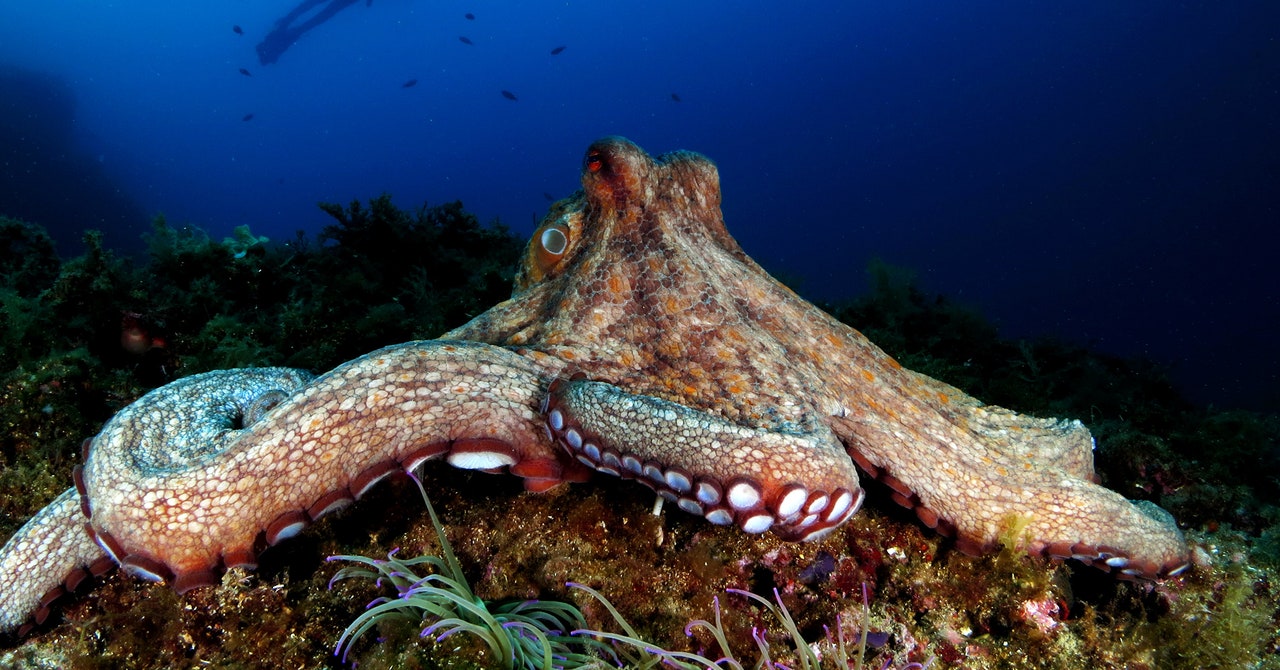
To that end, she says researchers need to think about how to raise and house cephalopods. These animals require shelter or dens, and they need regular enrichment so that they can express their normal behavior. And she notes that because many octopuses and squid are cannibalistic, they should be kept in separate tanks.
Another consideration is the water quality of their tanks, says Clifton Ragsdale, a professor of neurobiology at the University of Chicago who studies octopuses. Poor water quality can make the animals stressed or even kill them. He thinks the NIH’s proposal is very reasonable and welcomes new rules. “I’m hopeful that these regulations won’t be onerous and will improve the quality and kind of research that’s done,” he says.
Frans de Waal, a biologist and primatologist at Emory University, says new regulations could help reduce invasive experiments on cephalopods, such as ones that involve detaching their arms. “I think there are going to be questions about: Is this really necessary?” says de Waal, who also directs the Living Links Center, which studies ethical and policy issues related to animal sentience. “I would love for scientists to start thinking in alternative ways.”
De Waal thinks research guidelines should also extend to other invertebrates, such as crustaceans. He points to a 2013 study in which researchers from the University of Belfast showed that crabs in tanks learned to avoid electric shocks and sought out areas in the tank where they could escape them. The authors argued that this was evidence the crabs experience some form of pain, rather than just a reflex.
“Basically, every animal that has a brain—I’m going to assume that they are sentient for the moment because the evidence is going in that direction,” De Waal says. It’s thought that animals without brains, such as starfish, jellyfish, and sea cucumbers, do not feel pain in the same way humans do.
Crook is in favor of regulations for cephalopod research, but she says it’s not as simple as including them in current policies that apply to vertebrates. “Because these are a fundamentally different evolutionary branch of animals, it’s really hard to know whether a drug that you would give to enhance welfare in a vertebrate animal is at all effective in a cephalopod,” she says.
For example, the opioid buprenorphine is often given to lab rodents and monkeys as a painkiller. Its effects on cephalopods, however, is unknown. “How do you look at a cephalopod and say, ‘That one’s in pain and that one’s not?’” Crook asks. “There’s no point regulating if we have no idea whether or not we’re actually enhancing the welfare of the animal.” She thinks more research is needed on anesthetics and pain relievers to learn how to best carry out experiments that may cause pain to these animals.
For now, the NIH is only considering changes, and the agency hasn’t yet set a date on when those revisions would be implemented. As scientists learn more about how invertebrates experience pain, research protections may one day extend to much more of the animal kingdom.

